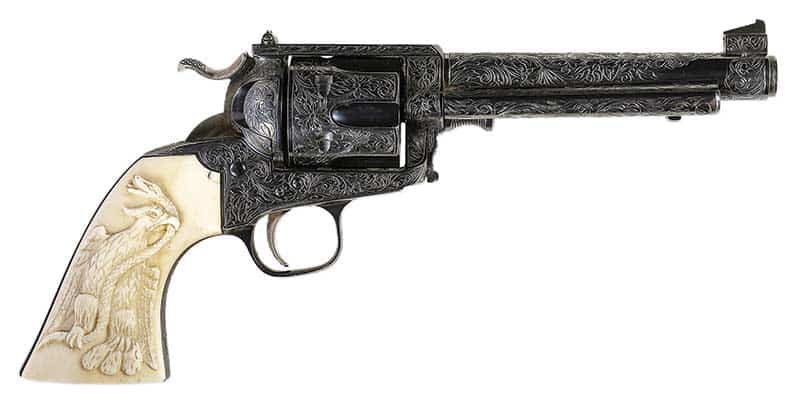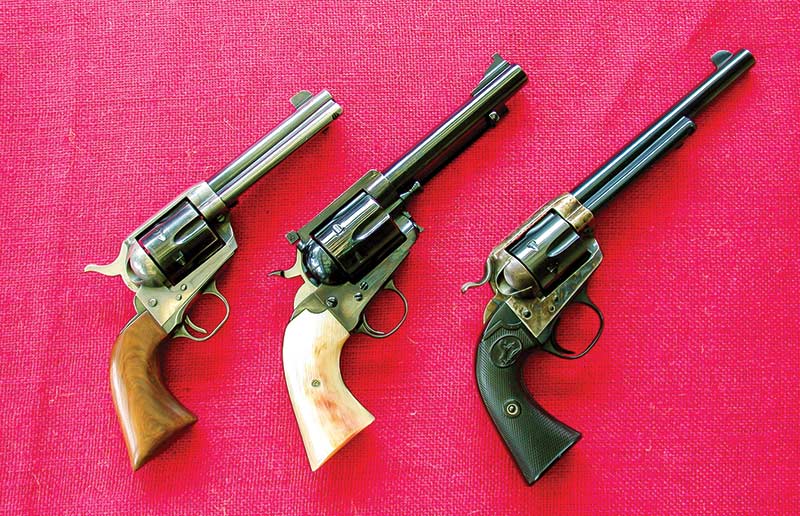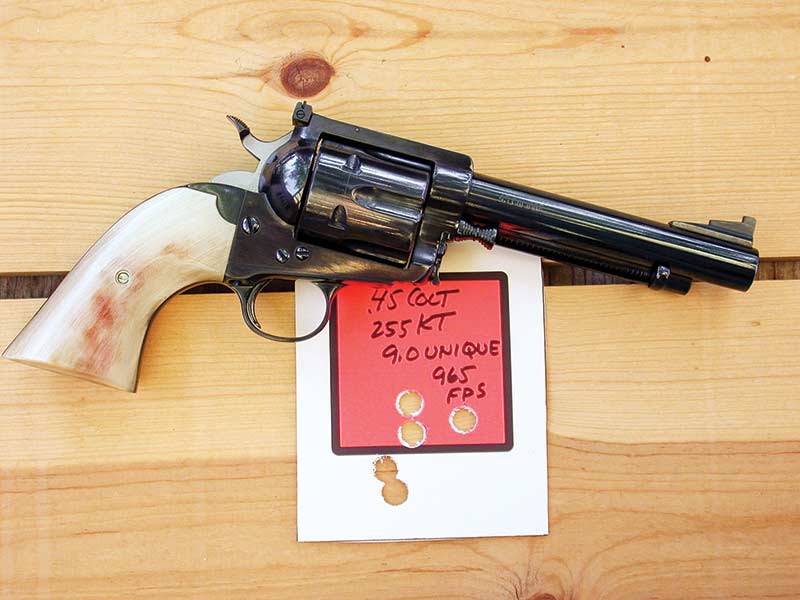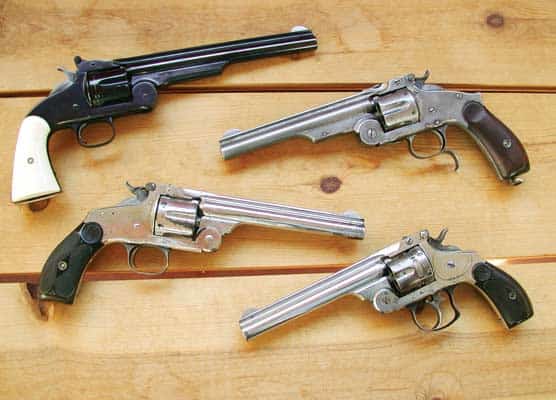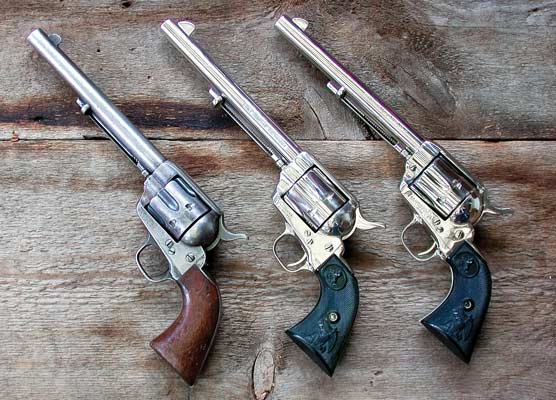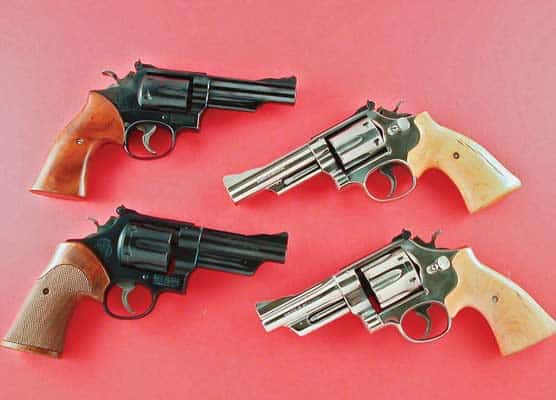Compromise Part VII: The #5
Arguably The Most Famous Single-Action
On the Fourth of July in 1925 a young cowboy decided to celebrate by firing his Colt .45 Single Action. He was using black powder loads; however, the bullets were oversized and he had ground the black powder to finer granules. The top half of the cylinder and the top strap parted company from that old Colt. This not only caused him to switch from the .45 to the .44 Special, it also started a writing career that would span six decades.
The seeds for Keith’s famous Single Action #5 were planted by another gun crank (as Keith called himself), one Harold Croft of Philadelphia. In the late 1920s, Croft had packed a suitcase full of sixguns and took the train all the way across the country to Elmer Keith’s small ranch in Durkee, Ore. Today the trip would take a few hours of actual flight time but in the pre-Depression ’20s it took several days.
Reasons
Croft made his long trek because he was curious and skeptical, and his friends were also skeptical. Keith had been writing about long-range shooting at several hundred yards with a sixgun; Croft wanted to see it for himself. Harold Croft had a lot to learn, but he also had a lot to teach to Elmer Keith. At the time, Croft was having lightweight pocket pistols built on Single Action and Bisley platforms while Keith was more interested in full-sized single-actions for long-range shooting and everyday packing.
Keith liked what he saw and along with the ideas of Harold Croft and gunsmiths Neal Houchins, R.F. Sedgley and J.D. O’Meara working together, the top strap of a standard Colt Single Action was welded up to make a heavy Flat-Top Target design. Then followed numerous improvements made to the old Colt Single Action to come up with the perfect sixgun — 1) The old flat mainspring was replaced by a U-type spring; 2) The hammer was made by welding a Bisley wide hammer on a standard hammer; 3) The rear sight is adjustable and the front sight, also adjustable, is the high Patridge type; 4) The base pin latch was changed to eliminate any chance of the pin jumping forward under recoil. 5) The grip frame was made by mating a standard Colt SA trigger guard and a Bisley backstrap; the latter had to be shortened and re-shaped somewhat to come up with what Keith perceived as the perfect grip frame.
Instead of the traditional spring-loaded cross latch, Keith’s design is a solid vertical lever in the front of the frame, which makes it impossible for the cylinder pin to move forward under recoil and yet can easily be rotated 90 degrees to remove said pin. This was Keith’s idea of what a Perfect Packin’ Pistol should be.
Modern Times
In 1987, Bill Grover set out, not to copy the Keith #5 S.A. but to really improve upon it and still keep the original flavor. He succeeded in producing a real salute to Elmer Keith as Dean of the Sixgunners. The grip straps, grip contour, base pin and lever latch are all identical to Elmer’s original #5 S.A.A. I have handled both sixguns and, when it comes to the grip frame, the original #5 and Grover’s Improved Number Five feel and look the same. The base pin lever, the enlarged base pin and the grip are perfect duplicates of Keith’s #5. I have held both sixguns in my hands at the same time and the feel is identical. The Improved Number Five is fitted with music wire coil springs and as with all sixguns from Texas Longhorn Arms, the loading gate and the ejector rod are on the left side of the sixgun to, as Grover said, be naturally used by a right-hander. The base pin lever latch, worked out by late master gunsmith Keith Dehart, is an identical mirror image.
The shotgun-style trigger sits as far back in the trigger guard as possible and moves very little when the gun is cocked. The hammer is low and wide for easy cocking. There is plenty of room in front of the hammer checkering for natural rolling of the thumb as the gun is cocked. The rear sight is an old Micro-style adjustable, fitted into a flat-top frame and is matched, as on the original, with a Patridge front sight.
The cylinder of the Improved Number Five is double heat-treated and both the frame and cylinder are made larger than the original as Grover’s gun was intended for use with the .44 Magnum. Grover said Keith used the number one sixgun cartridge of his day, the .44 Special, and he, Grover, did likewise in his day with the .44 Magnum. Although the Improved Number Five is larger than its predecessor, it does not feel either large or heavy at 44 oz. — and isn’t that an appropriate weight? The balance is perfect.
John’s Own
My personal .44 Number Five sixgun is a real one-of-a-kind as it has a cylinder with long flutes reminiscent of some of the Colt Single Actions that were put together after the turn of the century using New Service cylinders. A really nice touch is the cylinder being serially numbered to the sixgun with K-44 on the front and each chamber is also individually numbered on the back of the cylinder. Polishing and bluing are perfect and all metal-to-metal and wood-to-metal fit is excellent. The gun is timed perfectly and Grover cautioned I handle the single action correctly when removing and replacing the cylinder in order to keep from raising a ring around it. I liked this first Number Five so well I soon added a second chambered in .45 Colt giving me an unmatched pair of Perfect Packin’ Pistols.
The Number Five grip is quite small, with the size being the same as a standard Colt Single Action grip and my little finger curls under the butt. One might feel it is inadequate for heavy loads but I have used it with 250- and 300-grain bullets at 1,300 fps plus and it works fine. At least it did when I was younger. However, it is quite unforgiving in that a slight shift in grip will result in a companion shift in the bullet on target. It takes real concentration for me to always maintain the same grip on the Number Five.
Bill and I shared two dreams. The first, and largest, would see both of us hunting in Africa extensively using TLA sixguns. This was to happen as soon as Texas Longhorn Arms became prosperous. The second dream was to see me designing what I considered the perfect single action sixgun and Bill would build it. Neither dream ever came true; instead, Texas Longhorn Arms closed their doors in the late 1990s. With the closing of Texas Longhorn Arms, Bill formed Grover Arms but was only able to produce one sixgun before he had to quit altogether.
The closing of Texas Longhorn Arms had affected Grover greatly both emotionally and physically. So much so he never really let any of us know just how sick he really was. Diabetes, kidney failure and the amputation of both legs in September of 2004 was more than his body could handle. He went Home in October of the same year.
